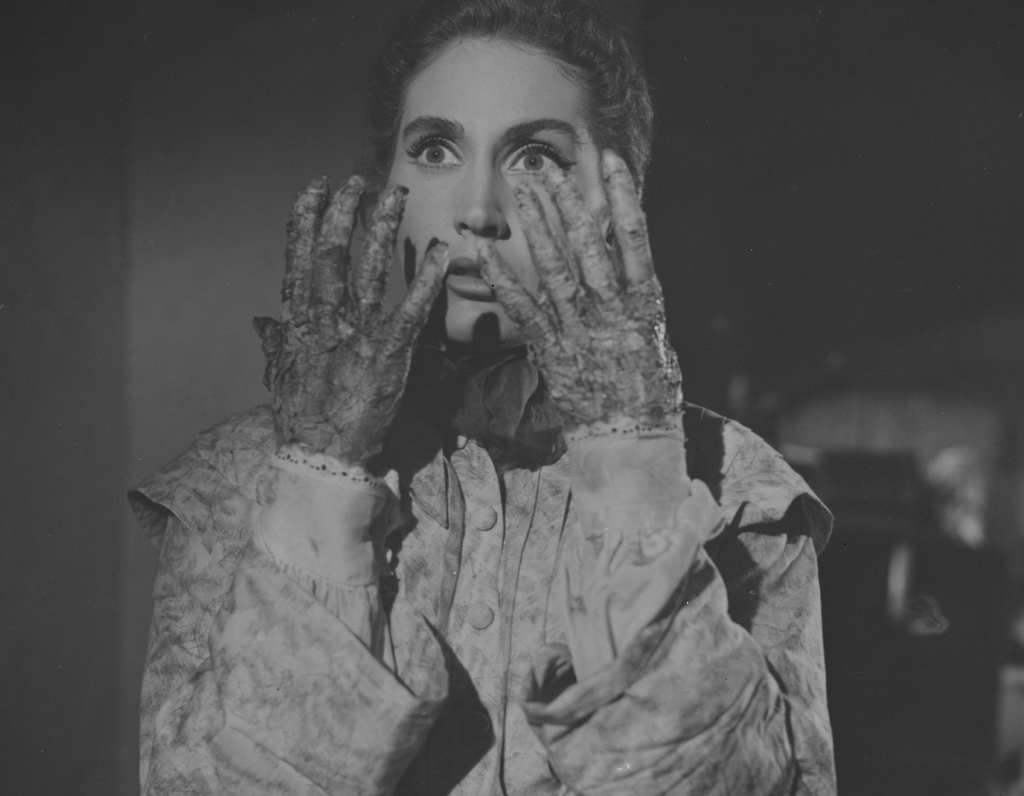Film at Lincoln Center Screening 22 Offerings From South of the Border
The pictures date from the mid-20th century and include the first Mexican 3-D effort, ‘The Sword of Granada’ (1953), in which a dashing Cesar Romero and a sultry Katy Jurado set out on a quest for the elixir of life.

‘Spectacle Every Day: Mexican Popular Cinema’
Film at Lincoln Center
July 26-August 8
Chano Urueta’s “The Witch’s Mirror” (1960) is no one’s idea of a classic horror movie, though it is a mash-up of several classics of the genre, including “The Hands of Orlac” (1924), “Rebecca” (1940), and “Eyes Without a Face” (1960). The setting is limited to three or four rooms in a backlot castle, the special effects are often not-so-special, and the plot makes hay with medical procedures that would give pause to the maddest of scientists. A recipe for disaster, don’t you think?
Let me tell you something: Urueta’s low-budget potboiler is blanketed in an atmosphere so rich and romantic that it comes close to transcending its pulpy underpinnings. Cinematographer Jorge Stahl, working alongside lighting designer Horacio Cavillo and cameraman León Sánchez, couldn’t have earned enough of a salary for the work he and the others did here. The “The Witch’s Mirror” doesn’t stint on weirdness and is recommended primarily to genre completists. A fabled diva of Mexican cinema, Isabela Corona, gives it her all as the title necromancer.
“The Witch’s Mirror” will be included in “Spectacle Every Day: Mexican Popular Cinema,” a series of pictures hosted by Film at Lincoln Center. Working in conjunction with the Locarno Film Festival, the good folks on West 65th Street will be screening 22 movies, some of which have never been seen theatrically north of the border.
The program has its finger in a variety of genres — from melodrama to musical to comedy to swashbuckler to luchador. The films date from the mid-20th century and include the first Mexican 3-D effort, “The Sword of Granada” (1953), in which a dashing Cesar Romero and a sultry Katy Jurado set out on a quest for the elixir of life.

Does celebrating a diversity of genres necessarily entail a lowering of standards? If “The Witch’s Mirror” is a hair’s breadth from being kitsch, “Santo Vs. The Vampire Women” (1962) and “The Batwoman” (1968) bridge the distance. That the former is emblematic of the popularity of wrestling in Mexican culture is all well and good; that the latter’s bikini-clad appropriation of the Batman television series is a “charming subversion” is postmodernist double-speak. That both succeed primarily for their puritanical appeal is a no-brainer. I mean, those vampire women? Just try to resist them.
Lust figures as well in “Streetwalker” (1951), alternatively titled “Harlot,” but so, too, does greed. Writer and director Matilda Landeta had to twist a lot of arms to land a job helming a film — it was no kind of work for a woman, you see — and this, her third picture, takes aim at male privilege and capitalist hegemony.
The picture concerns two sisters whose lives are determined by their feminine charms: Azalea (Elda Perata) walks the streets for money; Elena (Miroslava) marries for money. The results of this morality tale are uneven in tone, slack in tempo, and oddly intemperate in their eroticism. That, and “Streetwalker” is a mite rich: Those watching their caloric intake of melodrama will want to proceed with caution.
“The Unknown Policeman” (1941) was the first of 33 collaborations between director Miguel Melitón Delgado and comedian Mario Moreno, better known as Cantinflas. Americans likely know Cantinflas from “Around the World in 80 Days” (1956), in which he played Passepartout to David Niven’s Phileas Fogg. Outside of English-speaking countries, Cantinflas was no second banana: His celebrity guaranteed top billing and, or so word has it, made him the highest-paid actor in the world.
A year before his death in 1993 at the age of 81, Moreno stated that his flirtation with Hollywood was short-lived due to the language barrier. Non-Spanish speakers will intuit that the English subtitles give but the barest hint of the humor carried in Cantinflas’s (as Delgado stated) “peculiar way of speaking.” As it is, Moreno’s signature character comes across as a mix of Chico Marx and Charlie Chaplin — that is to say, a wily mangler of language and thorn-in-the-side of propriety.
“The Unknown Policeman” is as casually constructed as the average Abbott & Costello feature and as low rent as the typical Three Stooges short. Cantinflas’s appeal shines through all the same and makes one curious as to his other efforts. Should Film at Lincoln Center and the Locarno Film Festival be scratching their institutional heads over what to collaborate on next time, well, it’s staring them straight in el rostro.

